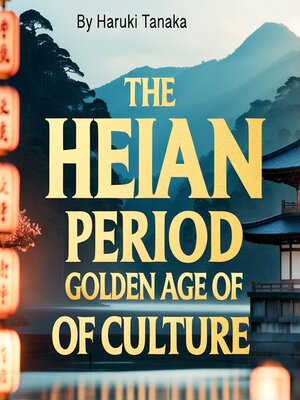
Sign up to save your library
With an OverDrive account, you can save your favorite libraries for at-a-glance information about availability. Find out more about OverDrive accounts.
Find this title in Libby, the library reading app by OverDrive.



Search for a digital library with this title
Title found at these libraries:
| Library Name | Distance |
|---|---|
| Loading... |
This audiobook is narrated by a digital voice.
The establishment of Heian-kyo, the capital that would give its name to one of the most culturally significant periods in Japanese history, marked a revolutionary transformation in Japanese civilization that would endure for nearly four centuries. When Emperor Kammu made the momentous decision in 794 to relocate the imperial capital from Nara to a new site in the mountains of central Honshu, he initiated more than a simple change of location; he set in motion the creation of a sophisticated urban center that would become the stage for an unprecedented flowering of Japanese culture, literature, and political refinement. The Heian period, spanning from 794 to 1185, represents the culmination of classical Japanese civilization, an era when the imperial court reached the heights of aesthetic achievement and cultural sophistication while developing distinctly Japanese forms of artistic expression that had absorbed and transformed Chinese influences into something uniquely their own.
The selection of the site for the new capital reflected careful consideration of both practical and symbolic factors that would establish the foundations for the remarkable cultural achievements that would follow. Located in a natural basin surrounded by mountains and blessed with abundant water from several rivers, the site offered strategic advantages including natural defenses, fertile agricultural land, and convenient water transportation that would support a large urban population. The choice also represented a conscious break from the Buddhist institutional power that had come to dominate Nara, as Emperor Kammu sought to escape the political influence of powerful Buddhist monasteries that had threatened imperial authority during the preceding decades.







